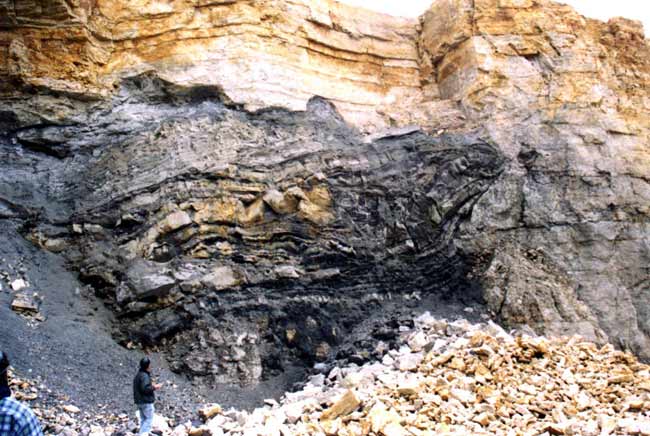Cave Near Chicago Full of Ancient Wonders

North America's oldest conifer tree and some ancient scorpion parts are among the fossil treasures found in a newly discovered cave in Illinois.
The new discovery also unearthed fossils of plants that may be new to science and revealed evidence of prehistoric forest fires.
Scientists date the specimens to nearly 315 million years ago, according to initial findings presented last month at the regional meeting of the Geological Society of America in Lawrence, Kan.
"I've never seen anything like this before," said Roy Plotnick, a paleontologist at the University of Illinois at Chicago who discovered the cave with students on a field trip to a site two hours outside of Chicago. "The limestone that forms the cave is 450 million years old, but that's not the interesting part of the cave. The preservation inside the cave is what's fascinating."
What is of interest to Plotnick and his colleagues are the well-preserved bits of plants and insects that have been cushioned in the cave and protected from the elements.
Much of the biological treasure is preserved as charcoal, which researchers assume is a sign that the ancient trees were burned in fires.
"This is a glimpse into a new window to the past," said Royal Holloway University of London paleobotonist Andrew Scott, who is researching samples from the cave.
Get the world’s most fascinating discoveries delivered straight to your inbox.
Additional details of the most fascinating discoveries in the cave include:
- Needles of a conifer tree, 2 million years older than any conifer previously described
- Nearly pristine plant spores of lycopods, the main coal-forming plants of the period
- Evidence of a general drying trend in the area.
The cave, which geologists estimate runs underground for miles, could provide scientists with years of research material.
Plotnick's cave is one of two recent sightings of ancient plants in Illinois. A coal mine near Danville, detailed in the May issue of the journal Geology, houses a 300-million-year-old fossilized forest. While the mine is filled with evidence of ancient wetlands, the cave also holds biological deposits from dryer environments that appear to be about 3 million years older than the plant fossils found in the mine.
"Their discovery, and ours, show how much there still is to find in supposedly well-known places like Illinois," Plotnick told LiveScience.
- World’s First Tree Reconstructed
- Surprise: Rainforest Grows When It's Dry
- Timeline: The Frightening Future of Earth


